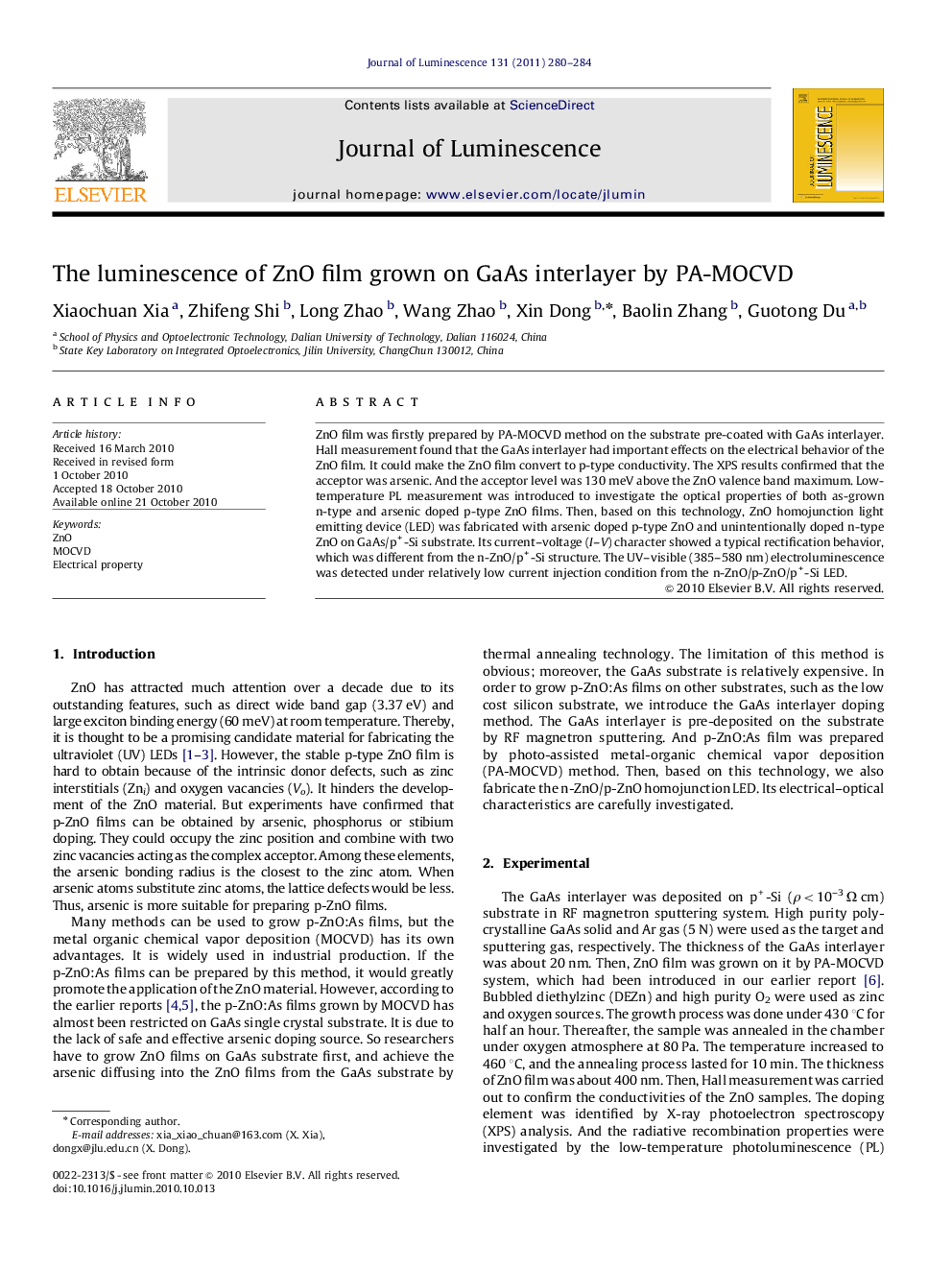| Article ID | Journal | Published Year | Pages | File Type |
|---|---|---|---|---|
| 5402193 | Journal of Luminescence | 2011 | 5 Pages |
Abstract
ZnO film was firstly prepared by PA-MOCVD method on the substrate pre-coated with GaAs interlayer. Hall measurement found that the GaAs interlayer had important effects on the electrical behavior of the ZnO film. It could make the ZnO film convert to p-type conductivity. The XPS results confirmed that the acceptor was arsenic. And the acceptor level was 130Â meV above the ZnO valence band maximum. Low-temperature PL measurement was introduced to investigate the optical properties of both as-grown n-type and arsenic doped p-type ZnO films. Then, based on this technology, ZnO homojunction light emitting device (LED) was fabricated with arsenic doped p-type ZnO and unintentionally doped n-type ZnO on GaAs/p+-Si substrate. Its current-voltage (I-V) character showed a typical rectification behavior, which was different from the n-ZnO/p+-Si structure. The UV-visible (385-580Â nm) electroluminescence was detected under relatively low current injection condition from the n-ZnO/p-ZnO/p+-Si LED.
Keywords
Related Topics
Physical Sciences and Engineering
Chemistry
Physical and Theoretical Chemistry
Authors
Xiaochuan Xia, Zhifeng Shi, Long Zhao, Wang Zhao, Xin Dong, Baolin Zhang, Guotong Du,
